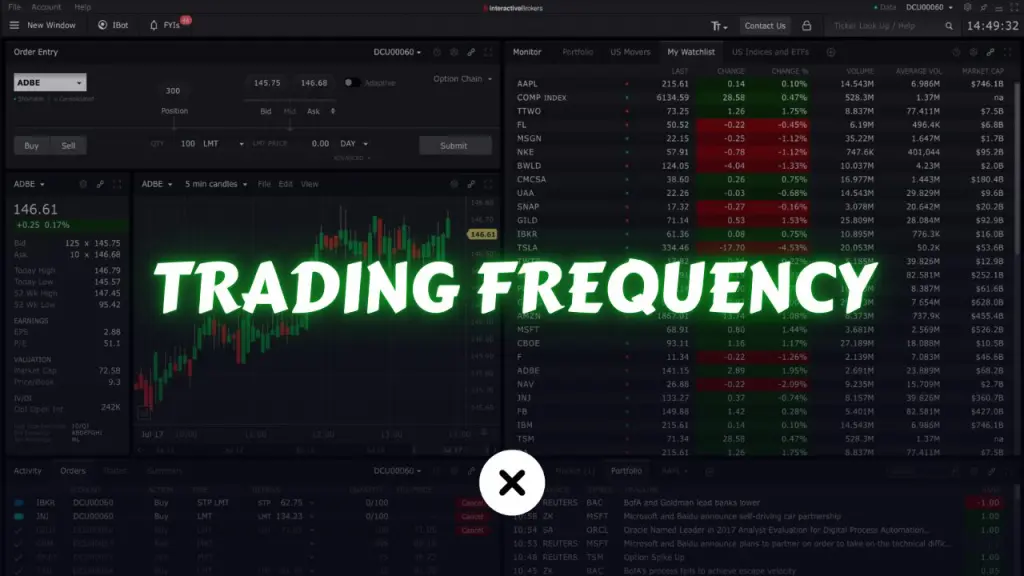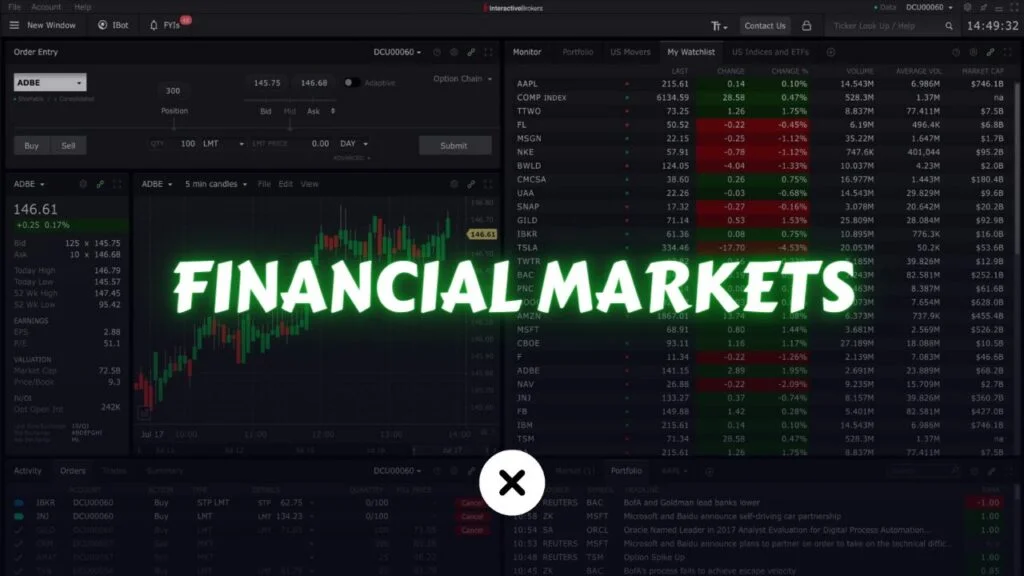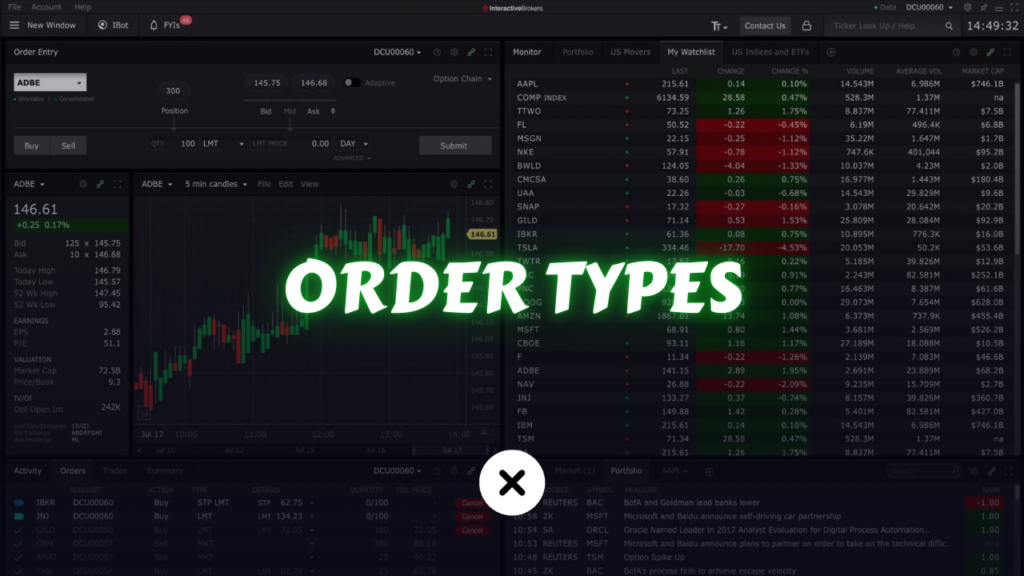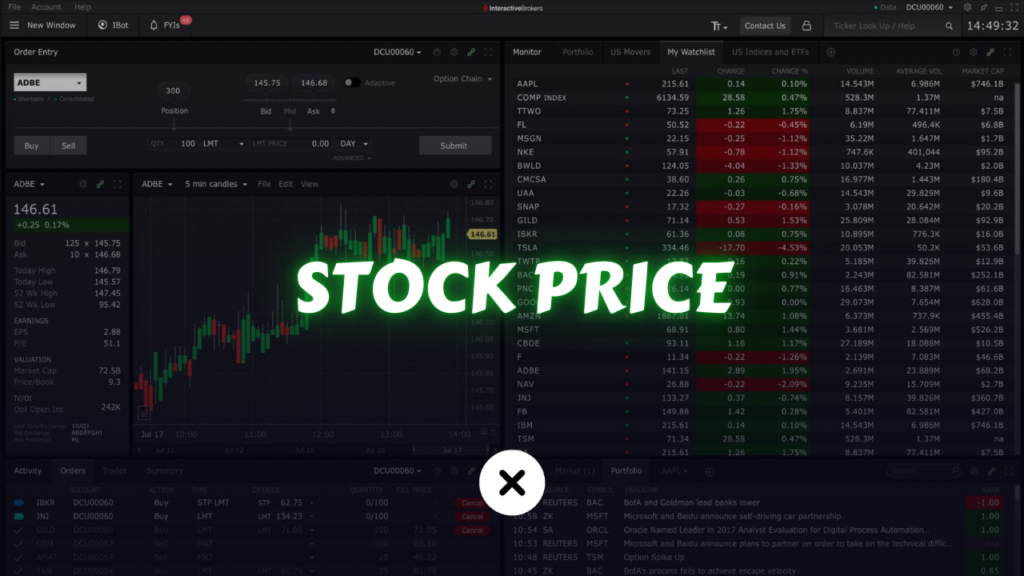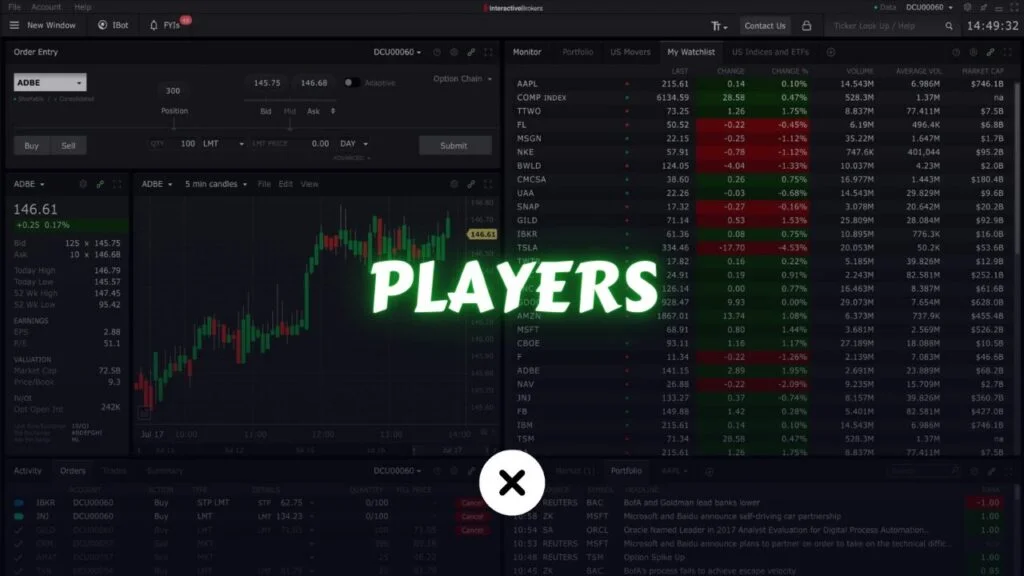In the world of financial markets, traders often seek an elusive balance between profit potential and risk exposure. One factor that profoundly influences this balance is trading frequency—how often a trader initiates or closes positions within a given period. Understanding your optimal trading frequency can help you strike the right equilibrium between taking advantage of market opportunities and managing your risk effectively.
Trading frequency refers to the number of trades you make over a specific time frame, which could be daily, weekly, monthly, or even on a per-session basis. Each trader may have a unique threshold based on their trading strategy, risk tolerance, and market conditions. The goal is to find an optimal pace that maintains consistent performance without exposing your trading capital to unnecessary risks.
In this comprehensive guide, we will delve deep into the concept of trading frequency and explore how to optimize it for consistent market success. We will also look at how trading metrics can help you measure and refine your trading frequency, discuss the various factors influencing it, and provide actionable tips and techniques to ensure you stay on top of your game. Whether you’re a novice or a seasoned trader, understanding the nuances of trading frequency can be a game-changer in the pursuit of consistent profitability.
Table of Contents
Why Trading Frequency Matters

Trading frequency is far more than just how many trades you make in a day, week, or month. It has direct implications on your overall performance, risk management, and even mental well-being. Below are some reasons why optimizing trading frequency is crucial:
- Risk Management: The more often you trade, the more frequently you expose your trading capital to the market. Each trade carries its own risk. On the flip side, trading less often may mean fewer opportunities to grow your account. Finding a frequency sweet spot helps you balance risk and reward.
- Transaction Costs: In most markets, each trade you make incurs a transaction cost, whether it’s in the form of commissions, spreads, or slippage. Excessive trading can chip away at your profits. Conversely, trading too infrequently might miss profitable opportunities. An optimal frequency can keep costs manageable.
- Emotional Control: Every trade involves an emotional component. Trading too frequently can lead to emotional exhaustion and impulsive decisions. On the other hand, trading too little may cause over-analysis or lack of confidence in executing trades. Striking the right balance helps you keep a clear head in decision-making.
- Market Adaptability: Different market conditions call for different trading frequencies. During periods of high volatility, you might want more frequent trades to capitalize on large price swings. In calmer periods, a lower frequency might be more suitable. Adapting your trade frequency to the market environment can enhance your success rate.
By paying attention to trading frequency, you can address each of these aspects and cultivate the habits that lead to long-term consistency and profitability.
Key Factors That Influence Trading Frequency
Before you determine your optimal trading frequency, it is important to recognize the various factors that play a role in how often you should be trading. Not every trader has the same objectives or trades under the same circumstances, so it is vital to tailor your approach accordingly.
1. Market Volatility
Market volatility refers to the rate at which the price of a security increases or decreases for a given set of returns. High-volatility markets tend to present more opportunities for quick gains (and losses), prompting more frequent trades if your strategy supports it. In contrast, low-volatility environments might limit your trading opportunities and thereby reduce your trade frequency.
- High Volatility Environment: More price swings, potentially more trades per day or week.
- Low Volatility Environment: Fewer price swings, potentially fewer trades.
2. Trading Style and Strategy
Your trading style often dictates your frequency. A scalper might execute dozens of trades in a single day, whereas a position trader may hold trades for weeks or even months. Day trading strategies also typically involve more trades compared to swing trading strategies.
- Scalper: Extremely high frequency, rapid entries and exits.
- Day Trader: Moderate to high frequency, opening and closing positions within the same day.
- Swing Trader: Lower frequency, holding trades for a few days to a few weeks.
- Position Trader: Very low frequency, holding trades for weeks, months, or even years.
3. Risk Tolerance
Your risk tolerance plays a critical role in determining how often you should trade. Traders with a high risk appetite might be more comfortable with frequently entering and exiting positions. Conversely, those with lower risk tolerance might prefer fewer, more carefully planned trades.
- High Risk Tolerance: Frequent trades, smaller but more frequent gains/losses.
- Low Risk Tolerance: Fewer trades, each trade might involve more thorough analysis and smaller position sizes.
4. Capital and Position Sizing
The amount of capital you have available and your position sizing strategy can significantly influence your trade frequency. For example, if you have a small account, you may need to be more selective in your trades due to margin constraints or risk management considerations. Larger accounts, meanwhile, may allow traders to take multiple positions simultaneously or trade more frequently without running into margin issues.
- Small Trading Account: Might require fewer trades with careful risk management.
- Large Trading Account: Potential for multiple concurrent trades and higher frequency if desired.
Measuring Trading Frequency Using Trading Metrics
Trading metrics act as the heartbeat of your trading performance, providing vital data that can help you understand how often you trade and how effective each trade is. By using these metrics, you gain clarity on your current trading frequency and the impact of that frequency on your bottom line. Below are key metrics you should track:
1. Trade Count
The trade count is the total number of trades executed within a given period (e.g., per day, week, or month). Monitoring your total trades gives you a quantitative measure of your trading frequency. If you notice a consistent upward trend in your trade count but no corresponding improvement in performance, it may be a sign of overtrading.
- Tip: Compare trade count across different market conditions (e.g., bullish, bearish, sideways) to see if you are effectively adapting or just trading out of habit.
2. Average Holding Period
The average holding period measures how long, on average, your trades remain open. A shorter holding period typically aligns with higher-frequency strategies like scalping and day trading. Meanwhile, longer holding periods correlate with lower-frequency approaches like position trading. Tracking this metric can help you see if you are deviating from your intended strategy.
- Tip: Use your average holding period to confirm consistency with your stated trading style. If you’re a day trader but your holding period averages several days, your trade frequency may not align with your strategy.
3. Win/Loss Ratio
Your win/loss ratio (or strike rate) is the number of winning trades divided by the total number of trades. Trading frequency can impact this ratio significantly. For instance, a very high frequency strategy might lower your win rate but potentially increase total net profit if risk is managed well. Conversely, a lower frequency with a high win rate might generate more stable results, but fewer total profits if each trade is small.
- Tip: Evaluate how changes in trading frequency impact your win/loss ratio to find the ideal balance.
4. Profit Factor
Profit factor is the ratio of gross profit to gross loss. A profit factor greater than 1 indicates overall profitability; below 1 suggests losses outweigh gains. Changes in your trade frequency can affect your profit factor. If overtrading leads to unnecessary losses, your profit factor might drop even if you capture some winners.
- Tip: Track your profit factor over time while adjusting your trade frequency to see if there’s an improvement or deterioration in performance.
Types of Trading Strategies and Their Ideal Frequencies

Different trading strategies come with varying trade frequencies. Understanding these distinctions helps you select an approach that best aligns with your lifestyle, risk tolerance, and market knowledge.
1. Scalping
Scalping is an extremely high-frequency trading strategy aimed at taking advantage of small price movements. Scalpers may enter and exit multiple trades within minutes or even seconds. The goal is to accumulate small gains that add up over time.
- Ideal Frequency: High (multiple trades per day).
- Pros: Opportunities to capitalize on micro-price fluctuations, quick feedback cycle, limited overnight risk.
- Cons: High transaction costs, requires laser-focused attention, mentally demanding.
2. Day Trading
Day trading involves opening and closing trades within the same day. This eliminates overnight risk and focuses on intraday price movements. Day traders typically look for short-term opportunities triggered by technical patterns, news events, or market psychology.
- Ideal Frequency: Moderate to High (could be 1–10 trades per day on average).
- Pros: No overnight risk, potential for multiple setups daily, suitable for active markets.
- Cons: Requires significant screen time, can be psychologically taxing, high intraday volatility risk.
3. Swing Trading
Swing trading spans a medium-term horizon, holding positions for a few days to a few weeks. Traders aim to capture short- to medium-term price swings by identifying support and resistance levels, trend lines, and other technical indicators. This style requires less frequent monitoring than day trading or scalping.
- Ideal Frequency: Low to Moderate (fewer trades per week or month).
- Pros: Less screen time compared to day trading, aims for bigger price moves, can be balanced with full-time work.
- Cons: Overnight risk, slower feedback cycle.
4. Position Trading
Position trading is a long-term approach where trades can be held for weeks, months, or even years. This style focuses on capturing larger market trends, relying heavily on fundamental analysis and macroeconomic indicators. Trade frequency is usually quite low.
- Ideal Frequency: Low (handful of trades per quarter or year).
- Pros: Less active monitoring, potential for large gains if the market moves favorably, suitable for those with limited time.
- Cons: High overnight and long-term risk exposure, requires patience and resilience during drawdowns.
5. Algorithmic (Automated) Trading
Algorithmic trading automates the process of identifying and executing trades based on pre-defined criteria. Depending on the strategy encoded, the frequency can vary from high-frequency scalping algorithms to slower trend-following systems.
- Ideal Frequency: Depends on the algorithm (could range from extremely high to moderately low).
- Pros: Eliminates human emotions, can process vast amounts of data quickly, backtested strategies can offer more confidence.
- Cons: Technical expertise required, risk of system errors, requires continuous monitoring and optimization.
Common Pitfalls of Excessive or Insufficient Trading Frequency
Balancing your trading frequency is paramount. Both overtrading and undertrading can hamper your performance. Let’s examine these pitfalls.
1. Overtrading
Overtrading occurs when you place more trades than your strategy reasonably calls for. This often stems from emotional factors such as fear of missing out (FOMO) or revenge trading after a loss. Overtrading can also result from trading boredom—taking subpar setups just to stay active in the market.
- Consequences:
- Higher transaction costs (commissions, spreads, slippage).
- Increased likelihood of impulsive, low-quality trades.
- Emotional burn-out and decision fatigue.
- Decline in overall profitability if more losses accrue.
2. Undertrading
Undertrading is the opposite extreme—trading less frequently than the market environment and your strategy merit. This can happen when fear, uncertainty, or lack of confidence holds you back from executing valid trade setups.
- Consequences:
- Missed opportunities that could have been profitable.
- Stagnant account growth.
- Loss of market feel and trading skills due to inactivity.
Optimizing your trading frequency involves avoiding these pitfalls by having clear guidelines, a disciplined mindset, and a thorough understanding of your strategy’s risk-reward profile.
Developing a Systematic Approach to Optimize Trade Frequency
A systematic approach helps ensure that you make data-driven decisions regarding trade frequency rather than succumbing to emotion or guesswork. Below are the key components of such an approach.
1. Crafting a Trading Plan
A comprehensive trading plan outlines your trading goals, strategies, risk management parameters, and performance metrics. By formalizing these details, you set a clear benchmark for determining whether your trading frequency aligns with your objectives.
- What to Include:
- Objectives and Goals: Growth targets, daily or monthly profit targets, etc.
- Strategy Outline: Indicators, patterns, or fundamental triggers you follow.
- Time Commitments: The amount of time you can realistically devote to trading.
- Risk Tolerance: Maximum drawdowns, daily stop-loss, or monthly loss limits.
2. Setting Clear Entry and Exit Criteria
Clearly defining your entry and exit criteria ensures you only trade when certain conditions are met, which helps prevent overtrading and ensures you don’t hesitate when a valid setup arises (thus avoiding undertrading).
- Entry Criteria:
- Specific price patterns or technical indicators (e.g., RSI oversold <30).
- Fundamental triggers like earnings reports or economic data.
- Risk-reward ratios and potential trade setups that meet your plan’s guidelines.
- Exit Criteria:
- Stop-loss levels based on technical support/resistance or percentage-based risk.
- Profit targets or trailing stops.
- Time-based exits if the trade isn’t moving as anticipated.
3. Risk Management and Position Sizing
Risk management is at the core of successful trading. Define how much of your account you are willing to risk per trade—commonly 1–2%—and position sizing accordingly. Doing so influences how often you can trade because it ensures that you won’t deplete your account too quickly if you hit a losing streak.
- Position Sizing Example: If you have a $50,000 account and you risk 1% ($500) per trade, structure your position so that if your stop-loss is triggered, you lose no more than $500.
- Impact on Frequency: This risk framework may allow or restrict how many trades you can open simultaneously, thereby influencing overall trade frequency.
4. Using Technical and Fundamental Analysis
Whether you rely on technical analysis, fundamental analysis, or a blend of both, a solid analytical foundation helps you discern the best times to trade. Consistent application of your chosen analyses ensures that your trade frequency stays aligned with market realities rather than impulsive decisions.
- Technical Analysis: Candlestick patterns, support/resistance, moving averages, MACD, RSI, etc.
- Fundamental Analysis: Economic news, earnings reports, interest rates, macroeconomic indicators.
Building Discipline to Maintain an Optimal Trading Frequency

No strategy can be effective if discipline is lacking. Maintaining an optimal trading frequency requires emotional control, record-keeping, and a commitment to consistency.
1. Emotional Control and Psychology
The psychological aspect of trading cannot be overstated. Fear and greed can push you into overtrading, while doubt and hesitation can cause undertrading. Developing emotional resilience involves:
- Mindfulness: Being aware of emotional triggers before they lead to impulsive behavior.
- Risk Acceptance: Accepting that losses are part of the game.
- Realistic Expectations: Avoiding FOMO and unrealistic profit targets.
2. Trading Journals
A trading journal is your personal reflection tool. It helps you analyze the thought process behind each trade, along with its outcome and your emotional state at the time.
- What to Record:
- Date and time of the trade
- Entry and exit price
- Strategy or setup used
- Profit or loss
- Emotional notes (e.g., fear, excitement)
- Lessons learned or observations
By revisiting your journal, you can spot patterns in your trading frequency, such as whether certain emotional states correlate with periods of overtrading or undertrading.
3. Consistency and Routine
Establishing a routine for your trading activities—such as pre-market preparation, mid-day reviews, and end-of-day analysis—instills consistency. If you trade at irregular times or without a plan, you’re more likely to deviate from your optimal trading frequency.
- Routine Tips:
- Allocate specific times of the day for chart analysis.
- Use an alarm or reminder to check market conditions.
- Plan breaks to prevent fatigue.
- Conduct a post-market review to assess if your trade frequency adhered to your plan.
Analyzing Market Conditions to Adjust Trading Frequency

Market dynamics aren’t static. Adjusting your trade frequency based on market conditions ensures that you capitalize on trends while avoiding periods when opportunities are scarce.
Bullish vs Bearish Markets
In a bullish market, prices generally trend upward, often leading to more predictable setups—swing traders and position traders might increase their frequency to capitalize on the extended bull run. In bearish markets, day traders and scalpers might find frequent short-selling opportunities due to sharper, faster price drops.
- Bullish: Potentially more frequent trades for momentum or trend-following strategies.
- Bearish: Traders comfortable with short-selling or trend reversals might up their frequency.
Range-Bound vs Trending Markets
Range-bound markets oscillate between established support and resistance levels. Traders using range-bound strategies (e.g., trading reversals at support/resistance) may find multiple setups within the range. Trending markets, on the other hand, favor momentum and breakout strategies, possibly increasing the frequency for trend-followers.
- Range-Bound: Potential for repeated entries and exits, moderate frequency.
- Trending: Increased frequency for breakout and momentum strategies.
Macroeconomic and News Events
Events like central bank announcements, GDP releases, or major corporate earnings can significantly increase volatility. Traders who specialize in news-driven strategies might trade more frequently during these periods. Others might choose to avoid the market to sidestep erratic price movements.
- High Impact News: Increases volatility, potentially offering more frequent trading opportunities.
- Low Impact News: May not affect trading frequency significantly.
Tools and Techniques for Tracking and Optimizing Trading Frequency
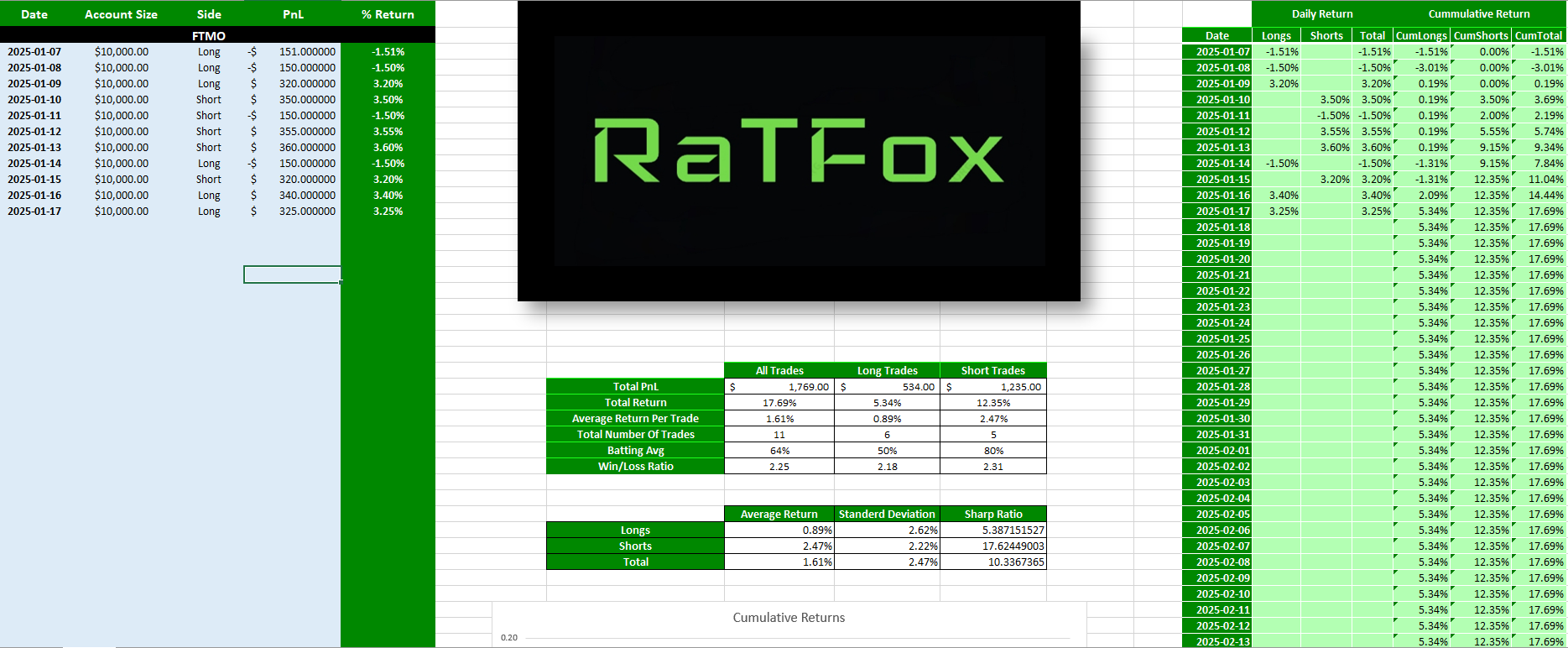
A variety of tools can help you measure, monitor, and optimize your trade frequency. Implementing these tools is essential to refine your process and maintain discipline.
1. Trading Journals and Spreadsheets
As highlighted before, journals are invaluable. You can also use spreadsheets to keep track of each trade’s entry, exit, time, and outcome. This data can then be used to create charts or graphs illustrating your trading frequency trends over time.
- Tip: Include columns for market conditions, emotional state, and strategy type. Summarize monthly or quarterly to spot longer-term patterns.
2. Charting Platforms and Technical Indicators
Many traders rely on advanced charting platforms like TradingView or MetaTrader. These platforms often allow custom indicators that can help you spot trading signals more systematically.
- Technical Indicators for Frequency:
- Average True Range (ATR) to gauge volatility and decide if market conditions justify more trades.
- Moving Averages to determine the overall trend, helping you decide if your strategy is aligned with current market flow.
3. Backtesting and Forward Testing
Backtesting involves applying your trading strategy to historical market data. This helps you see how often trades would have been triggered under different market conditions. Forward testing or paper trading does the same in real-time without risking real capital.
- Using Backtesting:
- Identify how many trades are generated during various market phases.
- Observe performance metrics like win rate, drawdowns, and profit factor.
- Using Forward Testing:
- Validate if backtested frequency patterns hold in live market conditions.
- Adjust parameters if your real-time frequency doesn’t align with backtest results.
4. Automated Alerts and Notifications
Many trading platforms and charting software allow you to set alerts based on specific price levels or indicator conditions. These automated notifications can help you trade with discipline, keeping your frequency aligned to clear-cut signals rather than emotional impulses.
- Benefits:
- Reduces screen time.
- Prevents missing valid setups.
- Helps avoid random, emotion-driven trades.
Real-World Examples of Trade Frequency Optimization
To demonstrate how trading frequency can vary and be optimized, let’s look at three hypothetical traders with different styles.
Example 1: High-Frequency Day Trader
- Profile: Alex is a day trader who trades U.S. equities. He usually makes between 5–15 trades per day.
- Challenge: Recently, Alex noticed a dip in performance. A review of his trading journal revealed that he had increased his daily trade count to 20+ after experiencing a losing streak.
- Solution: He implements a maximum daily trade limit of 10 trades. Alex also sets an emotional checkpoint after each losing trade to ensure he doesn’t revenge-trade. Over time, his trade quality improved, and so did his profit factor.
Example 2: Medium-Frequency Swing Trader
- Profile: Brenda is a swing trader focusing on forex pairs and commodities. She places an average of 4–6 trades per month, holding each position for several days to a couple of weeks.
- Challenge: Brenda found that she was missing significant moves because she was too cautious to enter trades when her technical indicators first signaled.
- Solution: She revised her entry criteria to include confirmation from one additional indicator rather than two. This slight adjustment allowed her to capture moves earlier, increasing her frequency to 6–8 trades per month without significantly adding risk.
Example 3: Low-Frequency Position Trader
- Profile: Chris is a position trader in the stock market, holding positions for months based on fundamental analysis. He rarely makes more than 2–3 trades per quarter.
- Challenge: Chris noticed that certain earnings announcements or macroeconomic indicators led to major shifts, which he was sometimes slow to respond to.
- Solution: He sets up automated alerts for key events and uses trailing stops to protect his profits, occasionally adding to his position if the trend remains strong. This approach helped him remain in sync with market changes while retaining a low-frequency style.
Each of these examples underscores that optimal frequency is highly personal and strategy-specific. Nonetheless, each trader systematically used tools and techniques—journals, alerts, risk limits—to find a frequency that maximizes profits and minimizes risk.
FAQs About Trading Frequency
- Is there a one-size-fits-all optimal trading frequency?
- No, the ideal frequency varies per trader based on factors like strategy, risk tolerance, and market conditions.
- How do I know if I’m overtrading?
- Signs of overtrading include a spike in trade count without corresponding profit increases, emotional exhaustion, and trading setups that deviate from your plan.
- Can I adjust my frequency over time?
- Absolutely. Market conditions evolve, and your experience grows. Frequently revisit your plan and metrics to ensure continued alignment.
- Does higher frequency always mean higher profits?
- Not necessarily. While more trades can mean more opportunities, it also increases transaction costs, market noise, and the risk of impulsive decisions.
- What if my trading style changes?
- As you gain experience or your lifestyle changes, your trading style and frequency may change, too. Adapt your plan and risk management accordingly.
- How do I handle transaction costs?
- Factor in broker commissions, spreads, and slippage when setting your trade frequency. High-frequency approaches need ultra-low fees to remain viable.
- Should I use automation to improve my frequency?
- Algorithmic tools can help maintain discipline, but they also require robust testing and oversight. Automation is only as good as the strategy programmed into it.
Key Takeaways
- Trading frequency is a crucial yet often overlooked element of a successful trading plan.
- Both overtrading and undertrading can negatively affect performance. Striking the right balance is key.
- Understand market volatility, trading style, risk tolerance, and capital constraints to tailor your optimal frequency.
- Regularly measure and analyze your trading metrics—trade count, average holding period, win/loss ratio, and profit factor—to gauge effectiveness.
- Your trading plan, entry and exit criteria, risk management, and analysis methods must be consistent and clearly defined to maintain an ideal frequency.
- Discipline, aided by trading journals and systematic routines, underpins any successful approach to managing trade frequency.
- Market conditions evolve. Adjust your trade frequency accordingly to leverage bullish, bearish, or range-bound phases.
- Tools like backtesting, automated alerts, and algorithmic trading can help track and maintain a consistent frequency that aligns with your strategy.
- Ultimately, trade frequency should serve your broader objective of consistent, sustainable profitability, rather than being an end in itself.
Conclusion
Optimizing your trading frequency is a pivotal step toward achieving consistent market success. It is not merely about how many trades you can execute per day or week, but rather how effectively those trades align with your overarching strategy, risk tolerance, and financial goals. Whether you’re a scalper eyeing fleeting price movements or a position trader riding multi-month trends, your frequency should be guided by data-driven insights and disciplined practices.
Remember, there is no universal blueprint—each trader’s optimal pace will vary according to their unique circumstances and market preferences. By monitoring essential metrics, maintaining a robust trading journal, and regularly refining your plan in response to the ever-evolving market landscape, you can discover the sweet spot that balances the desire for profit opportunities with prudent risk management. The journey to consistently profitable trading hinges upon methodical adjustments, emotional control, and continual learning—all of which revolve around finding (and maintaining) that optimal trading frequency.
Keep exploring, stay adaptable, and let your trade frequency be an intentional tool in your pursuit of enduring success in the markets. By mastering these concepts, you are well on your way to turning the complexities of trading into actionable strategies that foster long-term growth and financial stability.
